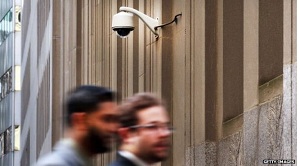The installed base of security cameras in North America is expected to grow from just 33 million in 2012 to nearly 62 million cameras by the end of 2016. However, according to Niall Jenkins, Manager, Building Technologies at IHS, the security camera product mix is changing. The analyst reports that network cameras accounted for only 17 percent of the total installed base in 2012, but they are predicted to account for 34 percent of the market by the end of 2016. High-definition closed-circuit television (HD CCTV) cameras — including HD-CVI, AHD and HD-TVI — have also increased their market footprint, from less than 1 percent in 2012 to almost 13 percent in 2016.
This shift in the market was primarily caused by camera price erosion driving up shipments in North America. The average selling price of a network camera in 2015 was estimated at around 45 percent of the historic peak, which means buyers can afford to purchase more cameras per installation and expand camera installations more frequently.
In addition, research shows that the emergence of HD analogue products is engaging a new, lower-end market. Retail and commercial installations are now able to install small video surveillance systems more cost effectively while still benefiting from HD resolution. Despite the increase in security camera shipments, it is still a challenging time for the video surveillance industry. Lower priced products have eroded some suppliers’ profit margins — especially network products. Additionally, while annual camera unit shipments are forecast to continue to increase through to the end of the decade, some regional markets are becoming saturated. For example, the North American market has moved from 11 people per installed security camera in 2012 to six people per camera in 2016. There is a growing realisation that the industry needs to identify new use-cases, technologies, customers and emerging markets, in order to continue to grow the installed base of security cameras into the next decade.








